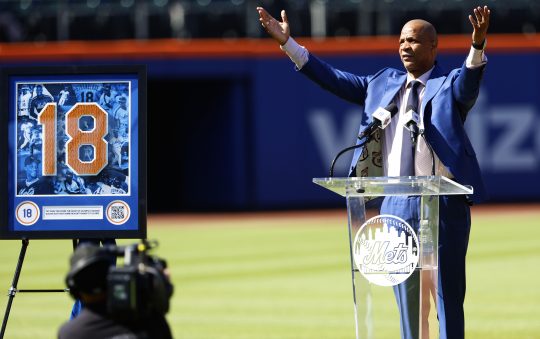
Mainstream media, in particular, tended to soft-pedal the long range outcomes of the 1992 uprising, i.e., “riots.” Citing groups like the Community Coalition and Koreatown Immigrant Workers Alliance, it emphasized some things had been accomplished. Few would disagree. However, the coverage represented a familiar glossing over of the lack of progress for fundamental change in South Central Los Angeles (SCLA). In 1992, even descriptions of participants themselves were often misleading- Blacks and Koreans were frequently referred to as the primary participants, actually, Latinos too were heavily involved and far more Latinos were arrested than Blacks.
The Community Coalition’s efforts to close liquor stores, motels and other blighted conditions were very important in the fight for positive change in South Central Los Angeles. However, in terms of Blacks’ needs, specifically, very little was done to improve things, either by government or non-government initiatives. Schools still fail to educate Black students-they remain at the lowest achievement level with little evidence of sustainable resources being allocated commensurate with their needs. While LAUSD continues to report increases in achievement scores overall, Black students remain firmly below all others. Similarly, despite periodic reports by the Los Angeles Police Department (LAPD) of reduced crime and violence in the city, many Black neighborhoods continue to experience high rates of violence, homicides and very poor police-community relations.
Rebuild LA, a highly touted non-profit formed by Mayor Tom Bradley was a colossal failure. Its top-down approach was unrealistic from the start and within five years, Rebuild LA was dead. Arguably, it further victimized the residents of SCLA. Overall, conditions in SCLA are more business- as-usual, than changed appreciably, especially for Blacks whose numbers and political capital continue to recede.
Revisiting an Urban Issues Breakfast Forum panel, (May 25, 2012) provides a range of opinions about the 1992 uprising:
Rev. Cecil “Chip” Murray was the first speaker. In his upbeat manner, he talked about positive change in the last 20 years, singling out the work of the Christopher Commission, which was formed after the “riots,” and what he called “drastic change” in the Los Angeles Police Department (LAPD). However, Rev. Murray cautioned, “We must find a way to help ourselves.”
Civil Rights Attorney Connie Rice began with a rhetorical question, “Where are we?” She described a riot as a demand and the 1992 so-called riots as a demand for dignity. Regarding police reform, Rice said former Chief William Bratton was the best thing to happen to LAPD. As to overall conditions in LA in the last twenty years, she maintained, “We (still) need to demand basic human needs (be met).”
A Korean attorney affiliated with the broader faith community, said there had been progress and praised Rev. Cecil Murray’s leadership role and FAME’s economic development model. She said not many realize Koreans’ per capita income is among the lowest among Asian groups, concluding, “We’re all together in the need for change, we all need each other.”
Rodney Kingsaid, “I’m grateful for my color and our (Black) history. Blacks, having been confined to “dirty jobs” resulted in their being seen as “dirty people.” He praised Black civil rights forbearers and said he was convinced things would get better because greed and selfishness can be overcome….. “We’ve got to make it better for generations to come and I intend to do my part.”
Charlene Jefferson, then Executive Director of the California African American Museum, asked the audience to reflect on the life and impact of Nelson Mandela as a model of strength and determination. She also suggested people think about what Blacks learned from the 1965 riots and posed the question, “Why, in 1992, did we have to validate ourselves?”
General Jeff, a Los Angeles Crenshaw High School graduate, had worked with the homeless in Los Angeles for several years. He said there are ten times more homeless people in Los Angeles now than in 1992 and most are Black. He was stunned when the verdicts for the LAPD officers in the “Rodney King trial” was announced because he expected a “slam dunk” guilty verdict. “What if Rodney King, who asked ‘Why can’t we all get along?’ had said, ‘Let’s burn it down’? Jeff felt there was a lot of dialogue but no sustained outrage in SCLA.
Linda Jay, the final panelist, was part of Mothers’ Against Gang Violence—her daughter was killed in the cross-fire of a gang shooting. She described her insight on the 1992 riots as “deep” and said what happened to Rodney King motivated people to take action. She stressed the need to stick together and said racial profiling is still a major factor in the Black community.
The 1992 so-called riots were not only the result long built-up tension between Korean merchants and Black and Latino residents, but ineffective political leadership, as well as systemic/ institutional neglect that caused conditions to deteriorate without targeted governmental intervention.
Yes, some things have changed since 1992, but honest assessment documents negative conditions still overshadow the efforts for positive change, especially in South Central Los Angeles where basic change remains more rhetoric than reality.
Outrage must be sustained, not just for predictable uprisings such as in 1965 and 1992, but for on-going oppression and injustice, especially in the Black community. Only sustainable pressure will change the behavior of politicians and put people, not politics, first.
Larry Aubry: e-mail l.aubry@att.net






